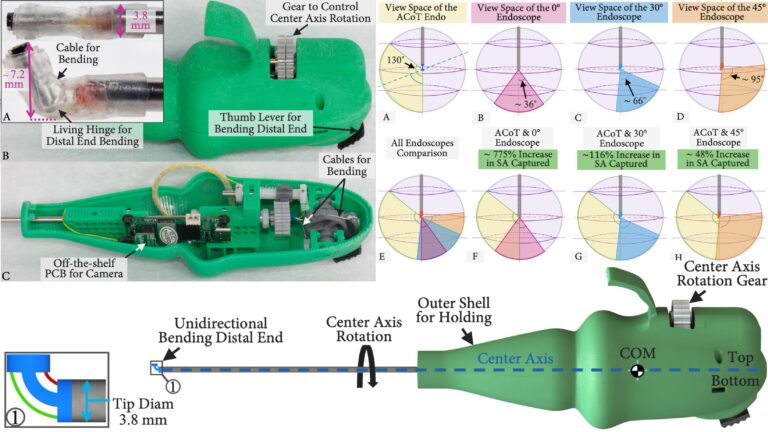To enhance visualization in pediatric Otolaryngology middle ear surgeries and reduce mastoidectomy instances, we introduce a novel Articulating Chip-on-Tip Endoscope (ACoT Endo). The ACoT Endo incorporates a cable-driven distal end camera and off–the–shelf Chip–on–Tip camera to improve visualization. We compared its capabilities with standard endoscopes, evaluating its bending capacity (70◦ ± 2◦) and center axis rotation (360◦). To test the overall functionality of this device, a Mock Ear was created to simulate the anatomy of the human ear, and the ACoT Endo’s ability to be used in this cavity is compared to a standard 0◦ Karl Storz endoscope through tests with the Mock Ear and respective endoscopes. The ACoT Endo accurately captured surgical details similar to standard endoscopes in the ENT field. Compared to the 0◦ Karl Storz endoscope, the ACoT Endo demonstrated an increased field of view by approximately 69% and captured area by approximately 249%. ACoT Endo allowed the surgeon to effortlessly articulate the camera with the rotation of a finger, while an excision tool was inserted in the middle ear, a procedure that is currently extremely difficult with standard endoscopes. The ACoT Endo’s dynamic viewing angle and Chip–on–Tip camera enable unparalleled surgical visualization within the middle ear using a single endoscope, offering potential benefits in Otolaryngology procedures. By reducing the need for invasive mastoidectomies and providing better visualization tools, the ACoT Endo has significant potential to improve outcomes and safety in pediatric middle ear surgeries.

A Novel Articulating Chip–on–Tip Endoscope for Dynamic Middle Ear Surgical Visualization
Sign-in or become an IEEE member to discover the full contents of the paper.
